Possible ID: Podosphaera plantaginis
Classification: Podosphaera (?)
Phylum: Ascomycota
Class: Leotiomycetes
Order: Erysiphales
Family
Isolation and culturing methods:
Isolated from tree bark sample 3 in mycology laboratory. Sample was placed on malt extract agar + chloramphenicol and allowed to grow for a week. Pure sample was obtained by sectioning a small sample of the growth onto MEA plate.
Culture appearance and growth:
Surface texture appears white and fuzzy on top, and orange on the bottom 1wk into growth. Specimen becomes bright orange and white 3wks into growth, and excretes dark orange droplets. Hyphae measure 2.5-3um wide, regularly septate with no clamp connections.
Spore production:
Cleistothecia are dark orange, measuring ~50-55 x 60-64um and develop on agar surface, not embedded. Asci (?) measure 15-20um x 17.5-22.5um and cell wall structures are apparent.
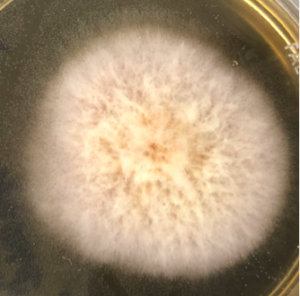
growth week 1
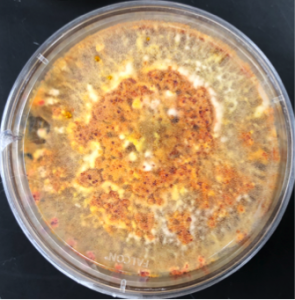
growth wk 3
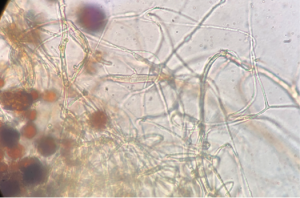
hyphae
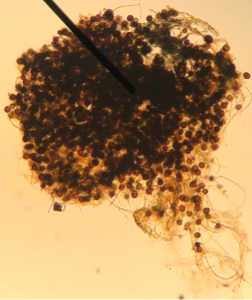
cleistothecia
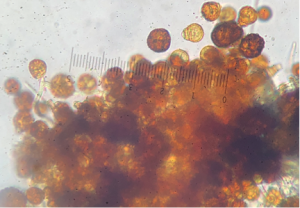
asci
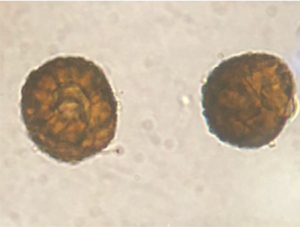
asci 100x
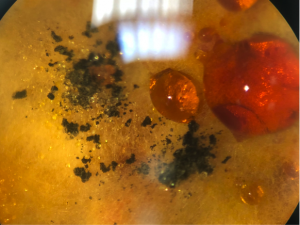
ETA: PCR sequencing and BLAST analysis identifies this species as Epicoccum nigrum, an endophyte and plant pathogen in the class Dothidiomycetes with a wide array of antifungal agents.
| References | |
| • | Braun, U., (1987). A monograph of the Erysiphales (powdery mildews). Beihefte zur Nova Hedwigia 89: 1–700. |
| • | Braun, U., (1995). The powdery mildews (Erysiphales) of Europe, Gustave Fischer, Jena. |
| • | Braun, U., & Cook, R.T.A., (2012). Taxonomic manual of the Erysiphales (Powdery Mildews), CBS-GNAW Fungal Biodiversity Centre, Utrecht. |
| • | Ellis, M.B., & Ellis, J.P., (1985). Microfungi on land plants, an identification handbook, Croom Helm, London. |
| • | Ellis, M.B., & Ellis, J.P., (1997). Microfungi on land plants, an identification handbook (2nd ed.), Richmond Publishing Co., Slough. |